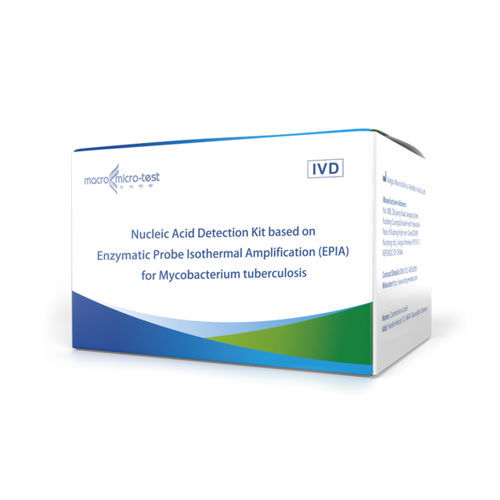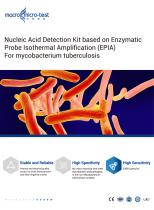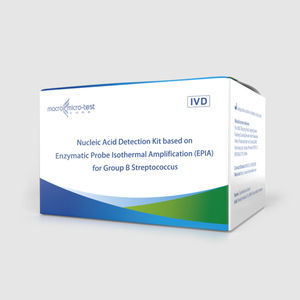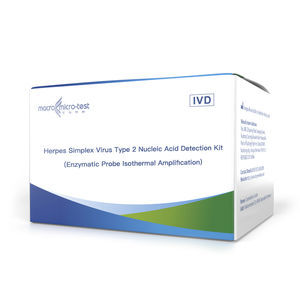
- Laboratory
- Laboratory medicine
- Flu test kit
- Jiangsu Macro micro-test Medical Technology

- Company
- Products
- Catalogs
- News & Trends
- Exhibitions
Infectious disease test kit HWTS-RT102COVID-19flufor home use
Add to favorites
Compare this product
Characteristics
- Applications
- for infectious diseases, COVID-19, flu
- Application field
- for home use
- Tested parameter
- for antigens
- Micro-organism
- SARS-COV-2, influenza A, influenza B
- Sample type
- nasopharyngeal
- Analysis mode
- immunochromatographic
- Format
- cassette, strip
- Other characteristics
- custom, self-test
Description
This kit is used for the in vitro qualitative detection of the patients with tuberculosis-related signs/symptoms or confirmed by X-ray examination of mycobacterium tuberculosis infection and sputum specimens of the patients requiring diagnosis or differential diagnosis of mycobacterium tuberculosis infection.
Epidemiology
Mycobacterium tuberculosis (Tubercle bacillus, TB) is a type of obligate aerobic bacteria with positive acid-fast staining. There is pili on TB but no flagellum. Although TB has microcapsules but does not form spores. The cell wall of TB has neither teichoic acid of gram-positive bacteria nor lipopolysaccharide of gram-negative bacteria. Mycobacterium tuberculosis which is pathogenic to humans is generally divided into human type, bovine type, and African type. The pathogenicity of TB may be related to inflammation caused by the proliferation of bacteria in tissue cells, the toxicity of bacterial components and metabolites, and the immune damage to bacterial components. Pathogenic substances are related to capsules, lipids and proteins. Mycobacterium tuberculosis can invade susceptible population through respiratory tract, digestive tract or skin damage, causing tuberculosis in a variety of tissues and organs, of which tuberculosis caused by the respiratory tract is the most. Occurs mostly in children, with symptoms such as low-grade fever, night sweats, and a small amount of hemoptysis. Secondary infections are mainly manifested as low-grade fever, night sweats, hemoptysis and other symptoms; chronic onset, a few acute attacks.
Other Jiangsu Macro micro-test Medical Technology products
Enzymatic Probe Isothermal Amplification
Related Searches
- Assay kit
- Solution reagent kit
- Blood assay kit
- Serum assay kit
- Immunoassay assay kit
- Plasma assay kit
- Infectious disease detection kit
- Blood rapid diagnostic test
- Diagnostic reagent kit
- Immunoassay rapid diagnostic test
- Molecular test kit
- Cassette rapid diagnostic test
- Virus rapid diagnostic test
- Respiratory infection test kit
- Whole blood detection kit
- Serum rapid diagnostic test
- Plasma rapid diagnostic test
- Optical assay kit
- Clinical assay kit
- Infectious disease rapid diagnostic test
*Prices are pre-tax. They exclude delivery charges and customs duties and do not include additional charges for installation or activation options. Prices are indicative only and may vary by country, with changes to the cost of raw materials and exchange rates.













